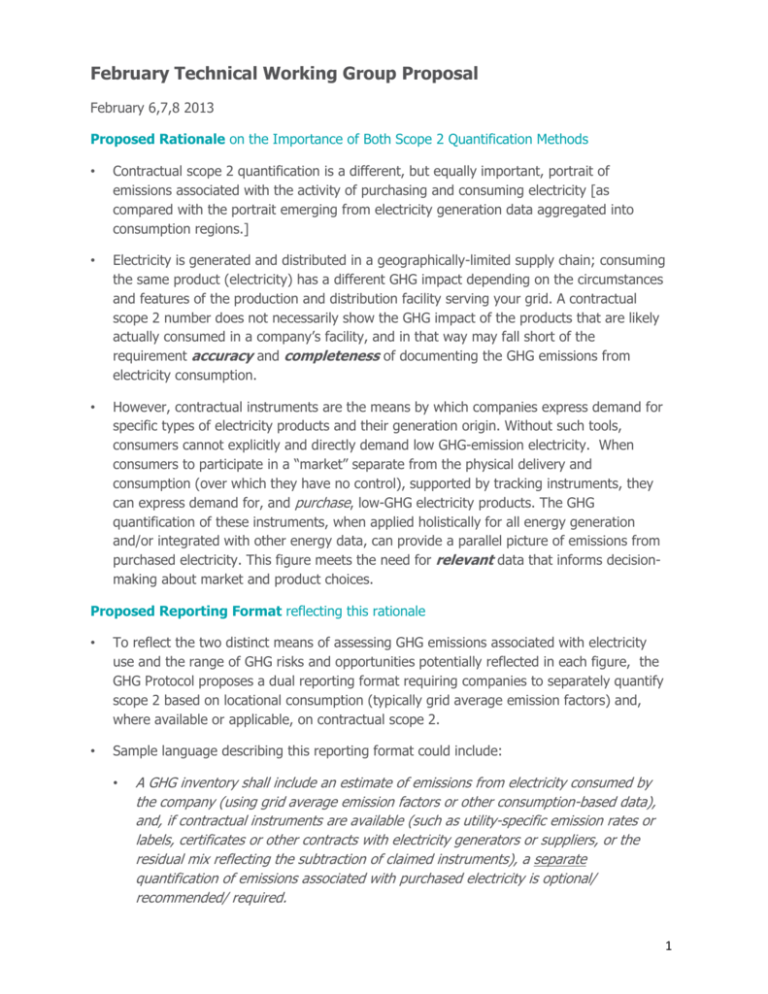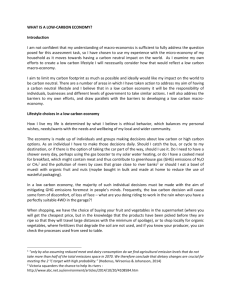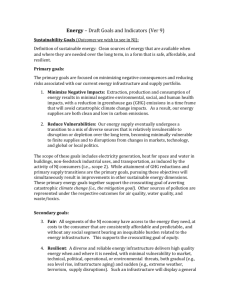February Technical Working Group Proposal
advertisement

February Technical Working Group Proposal February 6,7,8 2013 Proposed Rationale on the Importance of Both Scope 2 Quantification Methods • Contractual scope 2 quantification is a different, but equally important, portrait of emissions associated with the activity of purchasing and consuming electricity [as compared with the portrait emerging from electricity generation data aggregated into consumption regions.] • Electricity is generated and distributed in a geographically-limited supply chain; consuming the same product (electricity) has a different GHG impact depending on the circumstances and features of the production and distribution facility serving your grid. A contractual scope 2 number does not necessarily show the GHG impact of the products that are likely actually consumed in a company’s facility, and in that way may fall short of the requirement accuracy and completeness of documenting the GHG emissions from electricity consumption. • However, contractual instruments are the means by which companies express demand for specific types of electricity products and their generation origin. Without such tools, consumers cannot explicitly and directly demand low GHG-emission electricity. When consumers to participate in a “market” separate from the physical delivery and consumption (over which they have no control), supported by tracking instruments, they can express demand for, and purchase, low-GHG electricity products. The GHG quantification of these instruments, when applied holistically for all energy generation and/or integrated with other energy data, can provide a parallel picture of emissions from purchased electricity. This figure meets the need for relevant data that informs decisionmaking about market and product choices. Proposed Reporting Format reflecting this rationale • To reflect the two distinct means of assessing GHG emissions associated with electricity use and the range of GHG risks and opportunities potentially reflected in each figure, the GHG Protocol proposes a dual reporting format requiring companies to separately quantify scope 2 based on locational consumption (typically grid average emission factors) and, where available or applicable, on contractual scope 2. • Sample language describing this reporting format could include: • A GHG inventory shall include an estimate of emissions from electricity consumed by the company (using grid average emission factors or other consumption-based data), and, if contractual instruments are available (such as utility-specific emission rates or labels, certificates or other contracts with electricity generators or suppliers, or the residual mix reflecting the subtraction of claimed instruments), a separate quantification of emissions associated with purchased electricity is optional/ recommended/ required. 1 • Such instruments should meet best practices for operational criteria, as described in this Guidance document • Companies can disclose the eligibility features of these instruments • Companies should set separate targets around reducing emissions from contracted energy, as a complementary goal to reducing quantified scope 2 emissions from delivered and consumed electricity Arguments in support of dual reporting • Two types of quantification are fundamentally different, does not provide complete picture of activity to stakeholders to report only one number • Companies don’t “consume” a contract, they consume a product or service, and the represented in a certificate are not necessarily linked to what is being consumed (what sources are “keeping the lights on” at a given facility). • Both figures inform decision making • Both figures are imperfect and incomplete for different reasons (data quality, action boundary) • • Individual data sets of either type of emission factor may vary in quality, but the two methods reflect different information Pragmatic: recognizing that this is an evolving landscape, ensure GHG Protocol principles, demonstrate policy-neutrality, and provide corporate and programmatic flexibility that is relevant to decision-making • GHG Protocol principles: • Completeness – full reflection of electricity purchase and consumption • Transparency – maximum information disclosure to stakeholders • Accuracy – prioritizing either number in a hierarchy limits factual reality • Relevance – decision-making needs are broad and varied, need maximum information • Consistency – clearer means of tracking the same activity over time Goal Setting Flexibility • While both numbers would be required for reporting, but companies can choose (and specify) the figure being used for specific goal-setting • Programs (CDP, TCR, etc.) can recommend companies set goals around either, or both, figures separately • Existing goals should be kept consistent with the base year methodology – or, recalculate the base year. 2 TWG Feedback Questions (please reply by Wed, February 27) • Rationale: – • • Is this a fair and accurate description of the methods and a rationale for why an inventory would benefit from including both figures? Reporting format and items: – Does the proposed dual-reporting format and rationale adequately address the issues that have been brought up to date? – Is it a reasonable solution fulfilling GHG Protocol principles and serving company needs? – Should require separate discussion of electricity consumption in MWh/kWh? Goal-setting implications – Does this flexibility in target-setting serve corporate needs and provide transparency? 3










